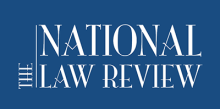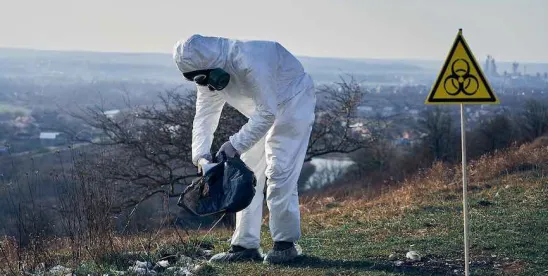Abstract
Marburg virus disease (MVD) is a severe hemorrhagic fever caused by the Marburg Virus (MARV), a member of the Filoviridae family closely related to Ebola virus. Since its initial identification in 1967, MVD has caused multiple outbreaks across Africa with high fatality rates, underscoring the urgent need for effective public health responses and comprehensive legal frameworks to manage associated risks. This article examines the virology, epidemiology, clinical features, treatment challenges, prevention strategies, and critical legal considerations for managing Marburg virus outbreaks, with a focus on recent incidents and biosecurity implications.
Introduction
MARV is a highly pathogenic single-stranded RNA virus that was first identified during outbreaks in Germany and Serbia in 1967. Outbreaks have primarily occurred in African countries, and most recently in Rwanda. It has case fatality rates (CFR) ranging from 24% to 100%, depending on outbreak circumstances and quality of care (World Health Organization [WHO], 2024).
Transmission and Clinical Presentation
Transmission of MARV occurs mainly through direct contact with bodily fluids of infected persons, including blood, saliva, vomit, and urine (Centers for Disease Control and Prevention [CDC], 2023). The incubation period ranges from 2 to 21 days. Initial symptoms include the sudden onset of high fever, chills, headache, and muscle pain, progressing to rash, nausea, vomiting, diarrhea, and abdominal pain. Severe cases develop hemorrhagic manifestations, multi-organ failure, and shock, often resulting in death within 8 to 9 days of symptom onset (Towner et al., 2009).
Diagnosis and Treatment
Laboratory diagnosis relies on molecular identification techniques. Currently, no licensed vaccine or specific antiviral treatment exists. Supportive care focusing on hydration, electrolyte balance, and symptomatic management remains the cornerstone of treatment (WHO, 2024). Promising vaccine candidates have been developed by the Sabin Vaccine Institute and are undergoing phase 2 clinical trials (Sabin Vaccine Institute, 2025).
Prevention and Public Health Measures
Preventing MARV transmission requires the strict use of personal protective equipment by healthcare workers, safe burial practices, and community engagement to reduce stigma and encourage early reporting (WHO, 2024).
Recent Outbreaks and Biosecurity Concerns
Recent outbreaks have resulted in high fatality rates. In 2024, an outbreak in Rwanda was linked to a laboratory incident at the Center for Family Health Research (CFHR) in Kigali and has raised significant biosecurity concerns. According to investigative reports, the International AIDS Vaccine Initiative (IAVI) received covert funding from the U.S. Defense Threat Reduction Agency (DTRA) to develop a Marburg virus vaccine, with research conducted under strict confidentiality at CFHR. However, the virus leaked at the CFHR lab, precipitating a local outbreak (Facts On Rwanda, 2024). IAVI has since initiated an internal investigation while cooperating with Rwandan authorities and WHO experts to assess containment and biosafety protocols. This incident underscores the critical importance of stringent biosafety standards in biomedical research involving high-risk pathogens. It also highlights the necessity for transparency and public communication to maintain trust and ensure community safety (Rwanda Biomedical Center, 2024).
Legal and Regulatory Frameworks
Given the high lethality and potential for rapid spread, MARV is classified as a select agent and a Category A bioterrorism threat by the CDC (CDC, 2023). This classification subjects MARV to rigorous regulatory controls under the Federal Select Agent Program (FSAP), which governs possession, transfer, and use of such agents in the United States. The Public Readiness and Emergency Preparedness (PREP) Act has been extended to cover Marburg viruses, providing liability protections for manufacturers, distributors, and healthcare providers involved in countermeasure development and deployment during public health emergencies (Federal Register, 2023). The PREP Act authorizes the Secretary of the Department of Health and Human Services to issue a declaration under the act for various emergencies. The declaration provides immunity from liability for claims deemed necessary to protect the health, safety and welfare of the public. This legal safeguard is essential to encourage rapid innovation and response. It gives the federal government the flexibility to waive or modify certain requirements in a range of areas, including in the Medicare, Medicaid, and CHIP programs, and in private health insurance, as well as to allow for the authorization of medical countermeasures and to provide liability immunity to providers who administer services, among other things. Other current PREP Act declarations include: Smallpox, Mpox, and other orthopox; additional hemorrhagic fevers; nerve agents and insecticides; Zika Virus; Pandemic Influenza; Anthrax; acute radiation syndrome; Botulinum toxin and others. Although the Biden Administration intended to end the PREP declarations for COVID-19, it has been extended to December 31, 2029. Although individual states also have public readiness and emergency preparedness programs, they vary from state to state, and the declarations are usually made through the health departments.
Federal authority under 42 U.S.C. § 264 empowers the Surgeon General and the Secretary of Health and Human Services to implement quarantine, inspection, and other measures to prevent disease spread, including detention or conditional release of exposed individuals (42 U.S.C. § 264). Internationally, the WHO coordinates outbreak response and information sharing through its Disease Outbreak News platform, facilitating global preparedness and containment efforts (WHO, 2024).
Bioweapon Concerns and Biosafety Imperatives
Marburg virus’s high mortality and potential aerosol transmissibility have led to its classification as a potential biological weapon (JAMA, 2002). Historical reports indicate Soviet research into MARV weaponization, underscoring the imperative for robust biosafety and biosecurity measures in research and public health laboratories (CDC, 2023). The recent laboratory-associated outbreak in Rwanda highlights the risks posed by inadequate biosafety protocols and the need for comprehensive regulatory oversight. Strengthening international standards and ensuring compliance with biosafety guidelines are critical to preventing accidental releases and safeguarding public health.
On March 26, 1975, the Biological Weapons Convention (BWC) was formed. It is a disarmament treaty that bans bioweapons. As of May 2025, 189 state parties have become members to the treaty. Unfortunately, there is no authority under the treaty to access laboratories and verify compliance, and the rapid advances in the life sciences, including synthetic biology and gene editing, enhanced by artificial intelligence, are cause for concern.
Conclusion
Marburg virus disease remains a significant global health threat due to its high fatality rate, zoonotic origin, and potential for human-to-human transmission. Although no licensed vaccines or specific treatments are currently available, ongoing research and clinical trials offer hope for future countermeasures. Robust legal frameworks—including the PREP Act, federal disease control statutes, and select agent regulations—are vital to supporting outbreak response, protecting healthcare workers, and encouraging countermeasure development. The recent Rwanda outbreak serves as a stark reminder of the importance of stringent biosafety standards, transparency, and international cooperation. Continued vigilance, investment in public health infrastructure, and enhanced legal preparedness are essential to mitigate the impact of future Marburg virus outbreaks and to protect global health security.
All views and opinions expressed in this article are those of the author and not necessarily those of The National Law Review.
References
- Bausch, D. G., et al. (2006). Marburg hemorrhagic fever associated with multiple genetic lineages of virus. New England Journal of Medicine, 355(9), 909-919.
- Centers for Disease Control and Prevention (CDC). (2023). Marburg Virus Disease. https://www.cdc.gov/vhf/marburg/index.html
- Federal Register. (2023). Notice of Declaration Under the Public Readiness and Emergency Preparedness Act for Countermeasures.
- Facts On Rwanda. (2024). Investigative Report on Marburg Virus Leak at CFHR.
- Journal of the American Medical Association (JAMA). (2002). Biological Threats: Marburg Virus as a Bioweapon.
- Rwanda Biomedical Center. (2024). Official Statement on Marburg Virus Outbreak and Biosafety.
- Sabin Vaccine Institute. (2025). Marburg Virus Vaccine Development Update. https://www.sabin.org
- Towner, J. S., et al. (2009). Marburg virus infection detected in a common African bat. PLoS One, 4(7), e7646.
- World Health Organization (WHO). (2024). Marburg Virus Disease – Rwanda Outbreak Update. https://www.who.int/emergencies/disease-outbreak-news/item/2024-DON123- World Health Organization (WHO). (2025). Marburg Virus Disease Outbreak Reports.
-United Nations (2024) – Processed by Our World in Data.




 />i
/>i
